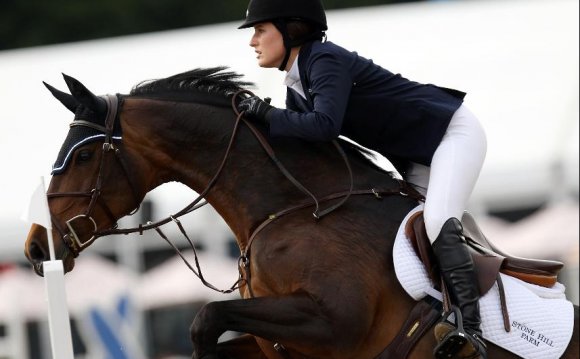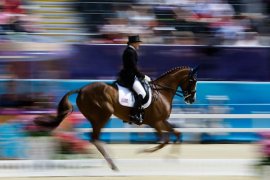
 Markus Schreiber / AP
Markus Schreiber / AP
Karen O'Conner for the usa competes together with her horse, Mr Medicott, when you look at the equestrian eventing dressage competition during the equestrian eventing dressage competition at Greenwich Park on 2012 Summer Olympics, on July 28, 2012, in London.
Regarding the eve of this London Olympics’ equestrian competitions, the wooden squirrels of Greenwich Park tend to be standing during the ready. They’re perched around 4-foot chestnut logs — one of 39 hurdles that ponies competing in eventing must negotiate, along side ersatz picnic baskets, figurines associated with Wind into the Willow’s Ratty and Mole, and a huge polystyrene world with rings manufactured from metallic. Rivals will complete the park’s 3.5-mile course by leaping through a huge horseshoe.
Welcome to eventing — the equine equivalent of the triathlon — which combines the disciplines of dressage, tv show bouncing and x-country. It is also a hobby enjoyed regularly because of the wealthy and sometimes even by royalty. But also for all its trappings of sophistication, eventing is perhaps more dangerous recreation in the summertime Olympics—to both horse and rider. The slightest miscalculation in cross country can cost all of them a medal, and perchance their life.
The sport has claimed an area in Olympic competition since 1912, yet its risks are a place of ongoing controversy. Abnormally deadly periods of rider fatalities worldwide, including 12 in a year-and-a-half between 2007 and 2008, caused also those in the middle of sport to vocals ambivalence about its hazards. In 2008, the president of the Overseas Equestrian Federation (FEI), Princess Haya Bint Al Hussein, warned that equestrian activities may not succeed to the London 2012 Games. The Overseas Olympic Committee “has very reasonable and genuine concerns about eventing protection, ” she told Britain’s Horse and Hound magazine. “Walking away and saying ‘Thank Jesus nobody died, ’ isn’t sufficient.”
INTERESTING VIDEO












